Well, here we are! We’ve finally made it to the exciting climax (??) of the three-part series into where the Lemures get their names.
Today, we’ll be talking about the Lemures that served under the Amazoness Quartet and, I have to admit, the names are quite a challenge to describe!
Since we’ve got a lot to discuss, let’s just dive right in!
In case you’ve somehow just stumbled across this page, it might help to start from the beginning. Part 1 (Hawk’s Eye & Fish Eye) and Part 2 (Tiger’s Eye).
Now that you’re all caught up, we’re ready to talk about why it’s so darn difficult to explain the names of the Amazoness Quartet’s Lemures.
You see, in keeping with the naming pattern of the Quartet themselves, almost all of their Lemures have names with a repeated word. While this may seem just like a fun pattern at first glance, it’s actually because almost all of their names come directly from Japanese onomatopoeia.
Making things even more complicated, Japanese onomatopoeia comes in two varieties:1
- 擬音語 (giongo): words which describe a sound
- dog barking: ワンワン (wan-wan)
- cat meowing: ニャニャ (nya-nya)
- hands clapping, bonfire: パチパチ (pachi-pachi)
- heavy rain fall: ザーザー (zaa-zaa)
- 擬態語 (gitaigo): words that describe an action, state, or emotion
- to feel uneasy: おどおど (odo-odo)
- the sound of crowd: ガヤガヤ (gaya-gaya)
- to shine, sparkle, glitter: ぴかぴか (pika-pika)
- to be fretful, irritated: いらいら (ira-ira)
So, as you can see from the list of provided examples, unfortunately there’s rarely a quick-and-easy way to just explain in English what a given word means since it usually is a concept that needs to be described. But all the same, I’m up to the challenge, so let’s start!
CereCere
I honestly can’t tell you why exactly, but CereCere has always been my favorite of all of the Amazoness Quartet. Maybe it’s just her personality? But regardless of the reason, I’m sad that she has the least Lemures of all of the Quartet. All of the Lemures that serve under her have –jou (嬢) at the end of their names, which is something akin to “miss” or “young lady.”2
- JaraJara Jou: So, jarajara (ジャラジャラ)3 is a metallic, jangling/clanging sound, not much unlike the sound a bunch of coins in your pockets would make, or an old-time slot machine that actually dispensed coins. You know, not much unlike the slot machine JaraJara sports on her chest.
- TogeToge Jou: Moving away from sounds for a second, togetoge (刺々, or 刺々しい; togetogeshii)4 means something sharp, harsh, stinging, or thorny. Kinda like, you know, the thorns on a rose.
PallaPalla
The Lemures that serve under PallaPalla are interesting in that, well, they don’t really follow a common theme for the end of their names like all the others under the Amazon Trio and the rest of the Amazoness Quartet.
- Mr. Magic Pierrot: I think he deserves a prize for being one of three Lemures without any sort of connection to onomatopoeia. Good on you, sir! As for the source of his name, it comes from pierrot,5 a mime of sorts in traditional French theater and the Japanese word for clown.
- GariGari: PallaPalla at least appends an affectionate –chan to the end of her name. Her name comes from garigari (がりがり),6 which actually has quite a few possible meanings, but in this case is most likely related to the sound or scratching or scraping, like a dentist would when cleaning your teeth.
- PeroPero: Another Lemure that gets the affection –chan, PeroPero has… umm… a very interesting name. You see, peropero (ペロペロ)7 means to lick or suck on something, such a lollipop. That would explain her candy attack. The word, incidentally, also means to lick or suck on something.8 That would explain her more, uh, attractive design.
JunJun
Taking a page from Fish Eye, we once again get an all-male Monster of the Day theme. Yay! Also interesting is that all their names end with –yarou (野郎), which depending on the context can mean something like a “guy” or “buddy,” or “jerk,” “bastard,” etc.9
- Tobikiri Yarou: And here’s our second Lemure without an onomatopoeia connection! His name however, seems a little less thought through. Tobikiri (飛び切り) means to jump and slash at someone,10 which I guess he does. Yay?
- Pakupaku Yarou: Pakupaku (ぱくぱく) is the sound of someone or something opening and closing its mouth repeatedly,11 such as a fish — like we see here — or a baby, or, you know, Pac Man. As I’m sure you’ve heard many times before, Pac Man’s name comes from the phrase pakupaku taberu (パクパク食べる).12
- BiriBiri Yarou: The word biribiri (びりびり) can mean something like the feeling of an electric shock,13 which would probably makes sense when you consider his power.
VesVes
Last but not least, we’ve got VesVes, the youngest of the Amazoness Quartet. All the names of the Lemures that serve under her have –musume (娘) at the end of their names, which is literally “daughter” but is used to refer to a young woman.14
- GaraGara Musume: Though garagara (ガラガラ) can have a lot of different meanings, the correct meaning here is that of a rattling sound.15 Specifically, her name is probably in reference to a rattlesnake, or garagarahebi (ガラガラヘビ) in Japanese.
- KeroKero Musume: So, umm, kerokero (ケロケロ) is the sound a frog makes.16 And she looks like a frog. DONE.
- ManeMane Musume: Our last Lemure without an onomatopoeia connection, mane (真似) means to mimic or copy,17 which is pretty much explained away with how her powers work. As for why they repeated her name? Probably just to keep with the theme of the rest.
- PaoPao Musume: As with KeroKero Musume, the name here comes from pao (パオ), which is the sound an elephant makes. ‘Cause, you know, she looks like an elephant.
And with that, we’ve reached the end of exploring where all of the names of the Lemures come from! Though the ones serving under the Amazoness Quartet were a bit more challenging since they aren’t just typical words you run across in the dictionary, I do find the naming theme interesting and think it gives their Lemures an added flair.
In case you’re curious about the names of all the other monsters of the day, you can find them here:
References:
- See Japanese Onomatopoeia (Wikibooks) ↩
- See 嬢 (Jisho.org) ↩
- See ジャラジャラ (Jisho.org) ↩
- See とげとげ (Jisho.org) ↩
- See Pierrot (Wikiepedia) ↩
- See がりがり (Jisho.org) ↩
- See ペロペロ (Jisho.org) ↩
- You know what I mean, stop pretending you don’t! ↩
- See 野郎 (Jisho.org) ↩
- See 飛び切り (Jisho.org) ↩
- See ぱくぱく (Jisho.org) ↩
- See Pac-Man (Development) (Wikipedia) ↩
- See びりびり (Jisho.org) ↩
- See 娘 (Jisho.org) ↩
- See ガラガラ ↩
- See ケロケロ (Jisho.org) ↩
- See 真似 (Jisho.org) ↩
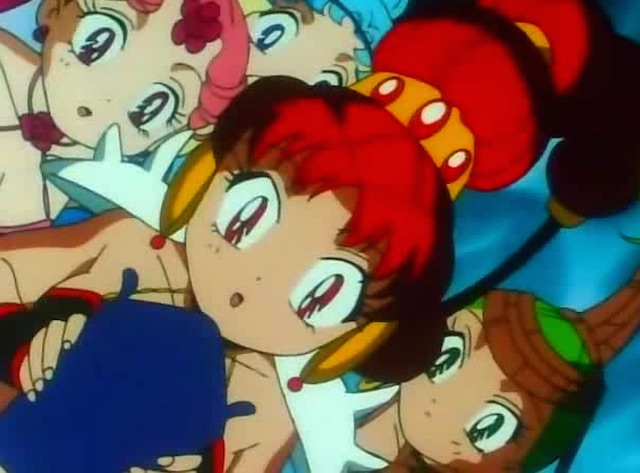
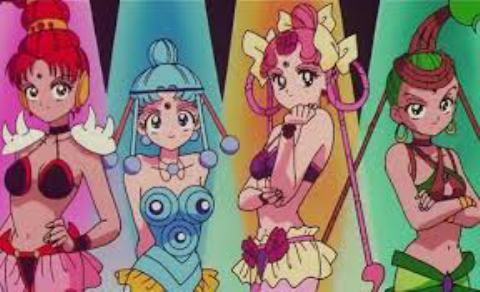
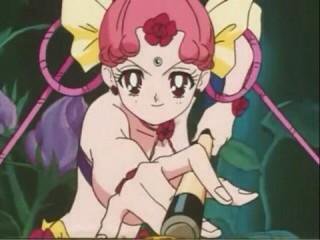
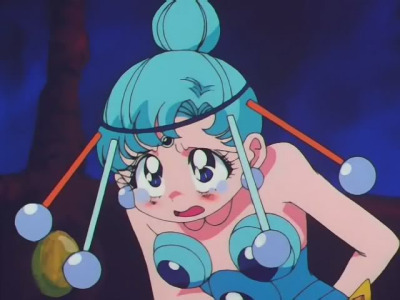
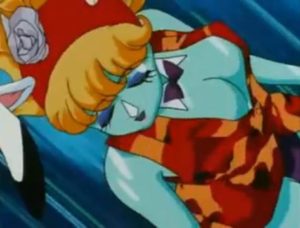
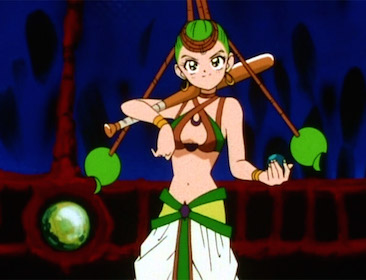
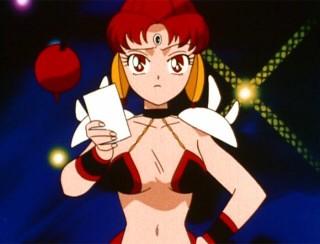
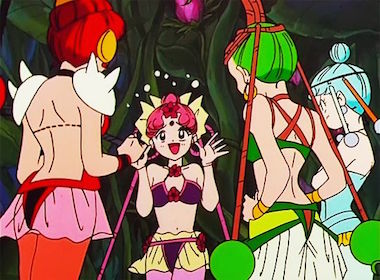

I am pretty sure that VesVes is the youngest one…
You’re absolutely right, thanks for pointing it out! This is why I should actually proofread what I write!
Thanks for putting in all this effort? I love reading all the obscure bits of information that I would never be able to find out anywhere else.
I didn’t realize you had already done this for the first three seasons as well! Time to go read all of those articles…
Honestly, I’m gonna be a bit sad when I finally finish the Phages and Shadow Galactica. I’ll have then covered the names of every single villain (major and minor) in the entire anime. x_x
Thanks for that! Awesome reads!!
I always thought PeroPero transforming into a sexier form was odd, but now it makes a lot more sense.
How would you go about localizing the puns with the Quartet’s Lemures?
Localizing is definitely an interesting issue that I’d love to take a look at.
I was thinking about doing a weekend article (which I write when I’m bored and don’t really care about if I’m on-topic or not) about how I’d localizing some of the MotD name. Could be fun!
That’s a great idea for an article! I’d love to see how you would tackle all the puns and wordplay.
Late to the party, I know, but I still feel compelled to comment.
VesVes is supposed to be the best beast tamer in the Dead Moon Circus, hence why all her Lemures resembled animals.
Also, I think Kero Kero Musume is a reference to Dokonjō Gaeru aka The Gutsy Frog (https://en.wikipedia.org/wiki/The_Gutsy_Frog), a 70s comedy manga about a middle schooler who accidentally lands on a frog after tripping over a rock, with the unfortunate toad reviving as a decal on the boy’s t-shirt.
What do you think of the argument that it should be “Amazones,” not “Amazoness”?
It’s an interesting argument and I think there’s a fair amount of support for it. But considering how Naoko could be rather loose with her word play, I don’t think it’s terribly unreasonable that she would have the Amazon and the Amazon+ess for the female group. This is also a naming pattern that many young Japanese readers would readily understand.